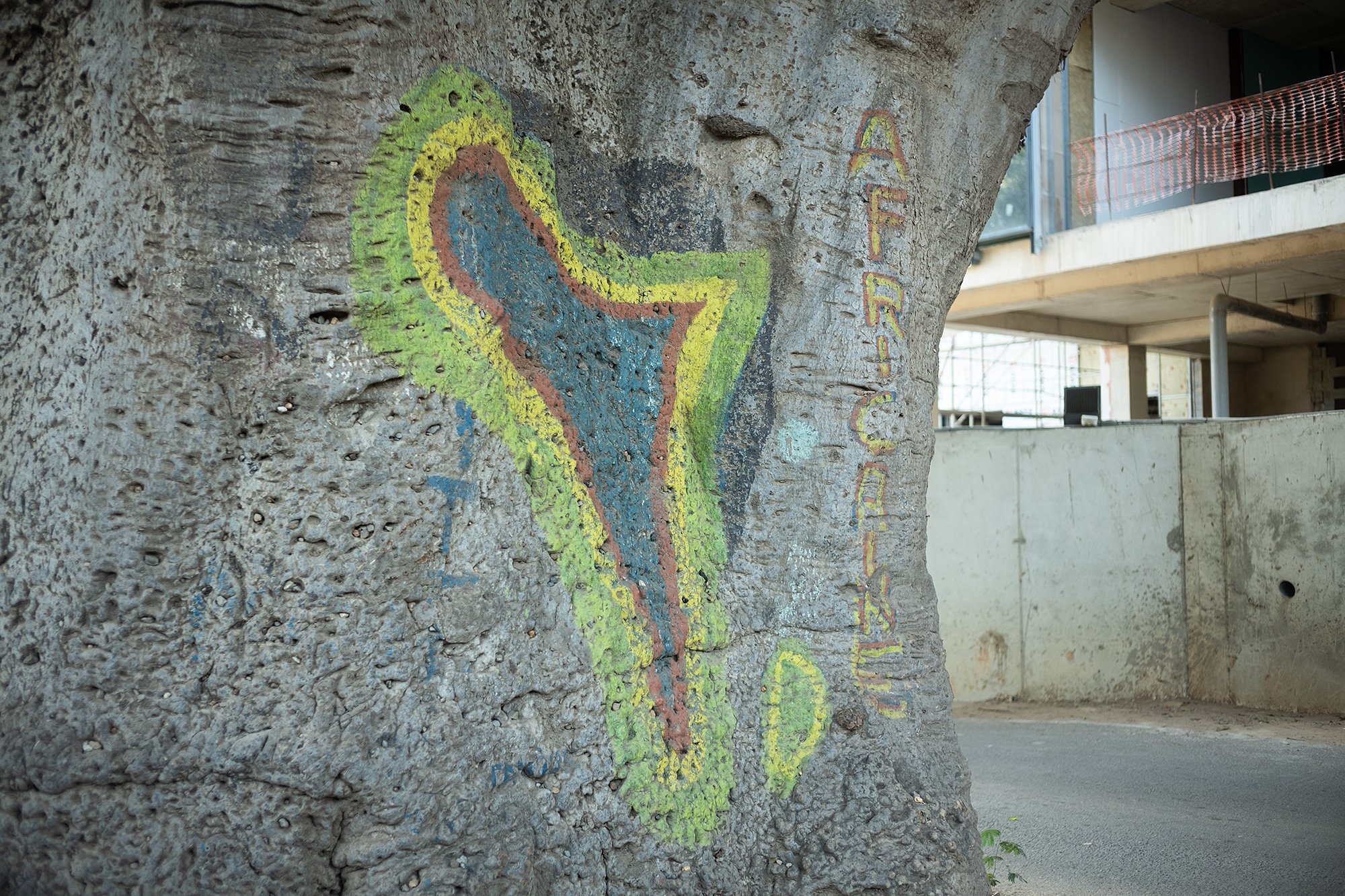
Senegal chapter one
A day in Dakar and a trip to Gorée Island.
When I head down at 08:55 Amadou is already waiting for me. I see him on the corner and he runs towards me as I walk towards him. The van is this way he tells me pointing behind me. I follow him to the car.
The Italians are already inside, a mother and her son. Her husband is home taking care of his parents and their elder daughter who is sick. I ask how they chose Senegal and she tells me they want to do safari but with the whole family. They’ve been to Morocco but wanted to see more of Africa and Senegal is close compared to other parts of Africa. That said their flight was seven hours (a one hour delay extended their original itinerary; thy had left their home at midnight after Christmas festivities. To say it had already been a long day would be an understatement).
Amadou had picked me up the day before from the airport. He had his son Amir with him, just two years old. He told me that the next day we’d have a bigger van so that we would be more comfortable once everyone had arrived.
From the airport, the driver made his way towards the city center and then had to call the host of the Airbnb once we were close to find the building. Alighting from the car I spotted the house. It had been painted grey since the photo Diama had sent; it was more beautiful for it. She greeted me at the door and Amadou said his goodbyes after asking me to pay him. He said he’d pick me up at nine in the morning.
“He is your guide?” Diama asked. “You know him?”
Internet, I said miming typing. She spoke to me first in French and I tried my best to remember what I had learned in high school. Spanish now kept getting in the way. “But you speak English?” she said. Yes. “Ah, ok.”
The apartment is beautiful, with a terrace that is as big as the living room and two balconies, one off of each of the rooms. I turned off the air con and opened all the doors. A breeze blew through the house. I luxuriated for a bit before running errands.
Diama had told me there were two housekeepers. They’d clean every other day. If I had laundry I should leave it out with the powder and they would do it for me. It was like heaven.
I ran out to pick up something to eat, some bananas, and laundry detergent. Downstairs from the house I picked up water. I debated eating dinner and then my stomach rumbled. I looked for something nearby ultimately picking up a chicken wrap from a busy fast food place I passed by. Not my best first meal in a new city, though it was very tasty and it did the trick.
I went to sleep with the doors wide open. A constant breeze tickled the sheets, caressed me where I lay. An adhan marked the time. I slept.



We drive south through the city. I try to keep track of where we are for the future. I’ll be spending another month in Dakar and I’m doing my best to get my bearings. Amadou says we’ll first stop by the train station before making our way to the 10am ferry.
Originally built as the terminus of the a 800-mile-line that began inland in Bamako, Mali, it now services commuter trains from the suburbs. Plans are being made to extend it to the airport and Thies, the third-largest city in Senegal.
Amadou tells us how during the first World War it saw a large number of African sharpshooters (tirailleurs) pass through its halls. He points out a statue that stands above the roundabout in front of the station, depicting a French soldier alongside an African one.
We alight from the van and he leads us past the roundabout and across the street. Later, I’ll realize that I won’t have noticed a single traffic light in the city or the country.



He leads us up to a walkway where we can watch the arriving trains, each unloading throngs of people into the city. He tells us the trains go only to the suburbs now and that trains arrive every 15 min.
As we are leaving a couple of men point at us and speak in accusing terms. I surmise they’re angry at us for taking photos, but we had been shooting from the walkway at the scene. I’m surprised anyone noticed. (Later, I’ll see Roberta taking flash photos in daylight and will realize that’s what may have alerted the protestors to our presence). Their friend tries to get them to stop, telling him let’s go. Amadou agrees and says “Let’s go.” And then the gendarmes step in. They take Amadou aside and then ask Roberta to step into their office. I stand outside with her son.
They confiscate her camera and take it upstairs. Amadou protests and then gets on his phone, angry. Shortly thereafter a man appears and introduces himself. He’ll be our guide for Gorée Island and tells us he’ll take us to the ferry. The terminal is just on the other side of the roundabout.



We miss the 10am ferry and wait for the 11:00 (which won’t leave until 11:40). Amadou catches up with us with Roberta’s camera. He tells us he doesn’t understand what the problem was. The station is a public place and photos are not forbidden. He tells us the gendarmes wanted him to pay a fine but he refused. He asked for the director of station security to sort it out. “Never in all the time I’ve been a guide has this happened,” he says.

While we wait for the ferry I ask Diallo how long he had been a guide. “Eighteen years,” he tells me. The first eight he worked as a photographer taking photos of tourists that he would then sell to them back at their hotels. But with the rise of smartphones he realized his prospects were limited and he has a family to raise: a wife, two daughters, and a son.
He tells me his eldest daughter is studying for the secondary school exams and tells me that the most elite girls school is on Gorée island. They accept only 35 students a year. Now he has his children in private school, investing 50k a year into their future. If his daughter gets into the school in Gorée island it’s free through her baccalaureate.

The ferry ride lasts 20 minutes. On the island, Diallo hurries us forward. The House of Slaves will close soon for lunch and may not reopen until 14:30 or 15:00. Inside, he keeps up the pace, helping us hurriedly take photos in front of the Door of No Return while there are few tourists. He had spotted a huge group lumbering our way.


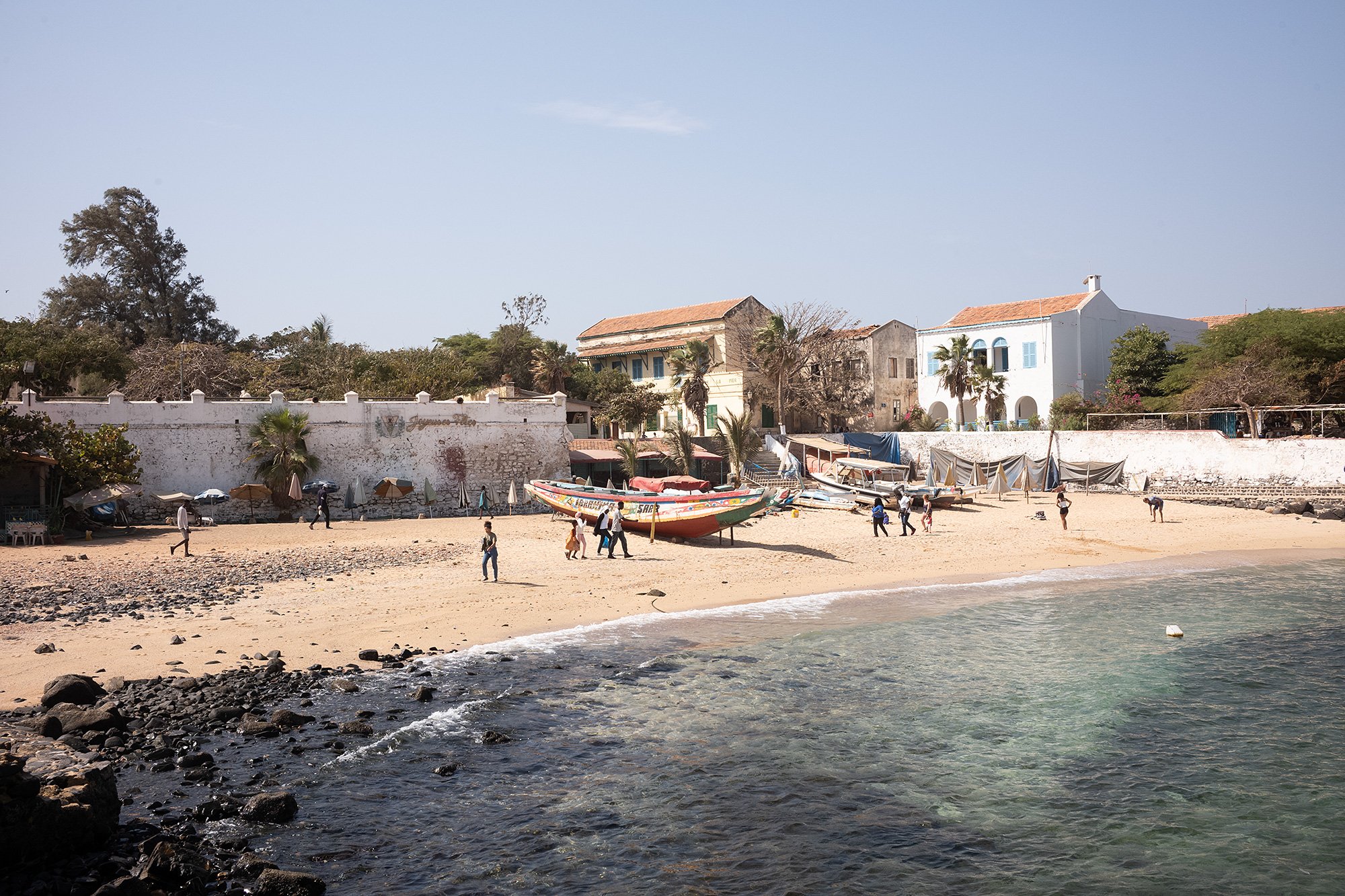



Gorée Island sits just off the coast of Senegal and was the lagest slave-trading center on the African coast from the 15th to the 19th century. The House of Slaves, used as a place to hold slaves and to fatten them up for the voyage was the epicenter on the island itself.
Diallo tells the story of the 20 million slaves who passed through the house, shows us the different cells in which they were kept. He tells us families were separated by gender and age, kept on the ground floor all while the French colonizers lived above.
He shows us the room in which virgins were kept, sometimes plucked by colonizers for sport (it was understood you didn’t come to Senegal with your wives). He shows us the chains and has us hold the 7kg weight they’d be attached to. Those who tried to flee would drown if they jumped off the boats.



He shows us the small cells where they keep the punished. We crouch as we walk into them and marvel at the cruelty inflicted upon the enslaved. And then he brings us back to the door of no return through which slaves passed to board the boats that would take them to the Americas once they made the weight necessary for the voyage.
He tells us that not all slaves were built the same, having come from various tribes. He tells us those from the Yoruba were highly prized as they were tall and big and draws a line from them to the American basketball players in the NBA.

From the House of Slaves we walk to a studio where they make sand art. We had passed a house where the first French black man was born, Blaise Diagne. Diallo asks us if we recognize the name. We shake our heads. We passed through his airport. And then it dawns on us.
The artist shows us the different colored sand, explaining from whence it all comes, he shows us how a painting is made. He applies glue to a wooden slab and then tosses different colored sand upon it seemingly at random. When he lifts the plank, the loose sand falls to the table; the profile of a woman appears. It’s like a magic trick. Roberta hangs back to shop for a piece. I step back out into the street.




Diallo leads us up the hill to the French fortifications. The barrels of a huge cannon still stand upon the crest. They weighed 55 tons and had a range of 14 kilometers. He tells us the guns were fired only once: to sink a British warship, its location marked by the red bouy we rounded to enter the port.

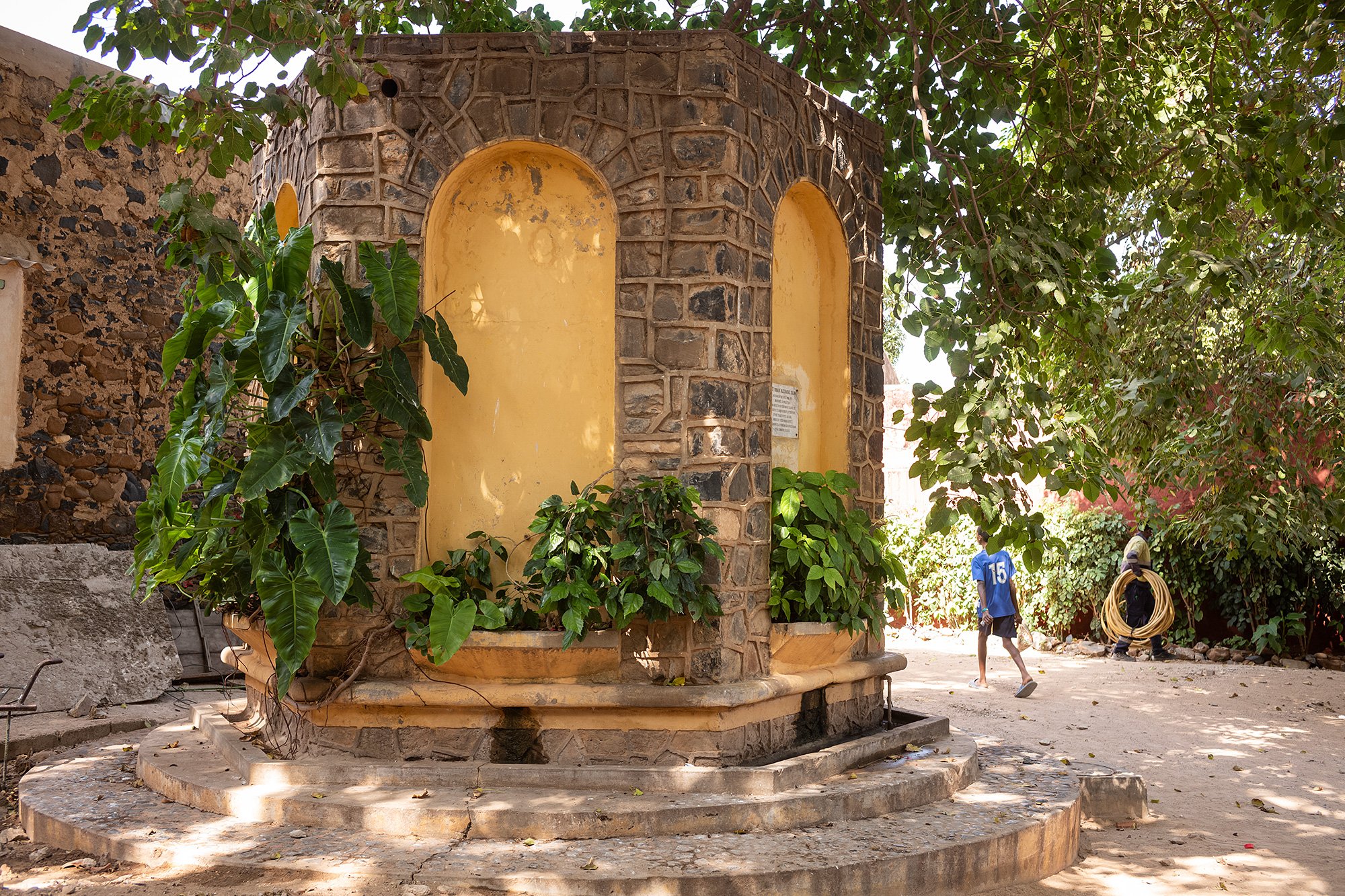

He tells us that the movie Guns of Navarone was on the island and leads us to the cliffs that were used for the shot. We pass a monument to the slaves that died, a white concrete structure that looks like a filled sail. Children play football at its base. We walk on the roof of what was once the hospital. People now live inside. Electricity keeps the dark at bay, carried along with water via underground cables and pipes from Dakar.

He tells us that the movie Guns of Navarone was on the island and leads us to the cliffs that were used for the shot. We pass a monument to the slaves that died, a white concrete structure that looks like a filled sail. Children play football at its base. We walk on the roof of what was once the hospital. People now live inside. Electricity keeps the dark at bay, carried along with water via underground cables and pipes from Dakar.
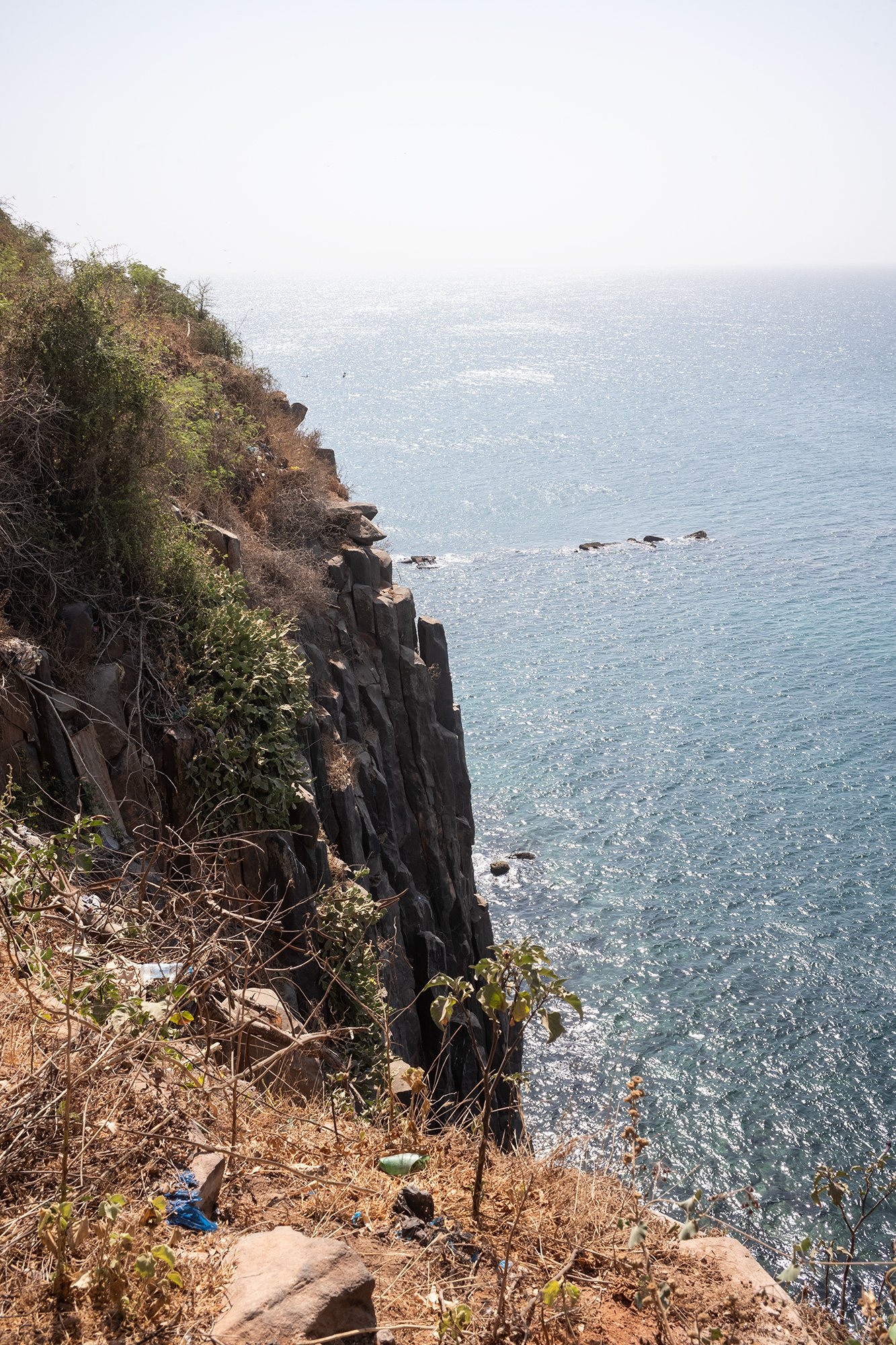
Walking back towards the port he points out the most beautiful street, lined with bougainvillea, and the church. You can go inside he tells us. It is open. Inside, the stoup is a large clamshell.





We pass a large square. A monument to the doctors and pharmacists who died during the yellow fever epidemic of 1878 stands alongside a yellow wall. A man herds goats as children and women relax in the shade of trees. I had asked Diallo if there were animals on the island and am happy to see the goats. He tells me there are also two donkeys on the island, who are on trash duty. I ask him if he knows what their names are. He laughs. I don’t know.




Near the old fort he shows us to the Monument of Emancipation, which depicts a slave, his shackles unbound, reunited with his wife. They stand upon a drum, which is used as a means of communication, used to broadcast the news.

We eat lunch on the beach. He tells us the water is cold and so I can’t resist taking my shoes off to wade in the Atlantic. It’s been far too long. The water is cool and refreshing after walking in the hot sun. A man tries to sell me a wooden turtle. He starts by telling me it’s 50,000 Francs. I tell him no. Soon it’s going for 10,000 Francs. I tell him I have no room in my luggage for such a piece. He tries one last time then fades into the crowd.


As we wait for our meal I see Diallo bargaining with a man for fish. I ask him how much they are. He tells me it’s 5,000 Francs for a certain number. I see him trying to slip an extra into his shopping bag. They don’t sell them by weight.

As we head back to the ferry I notice that Diallo isn’t holding his fish. He tells me he is meeting another group for a 16h tour. He’s left the fish at the restaurant and will pick them up after his second tour.


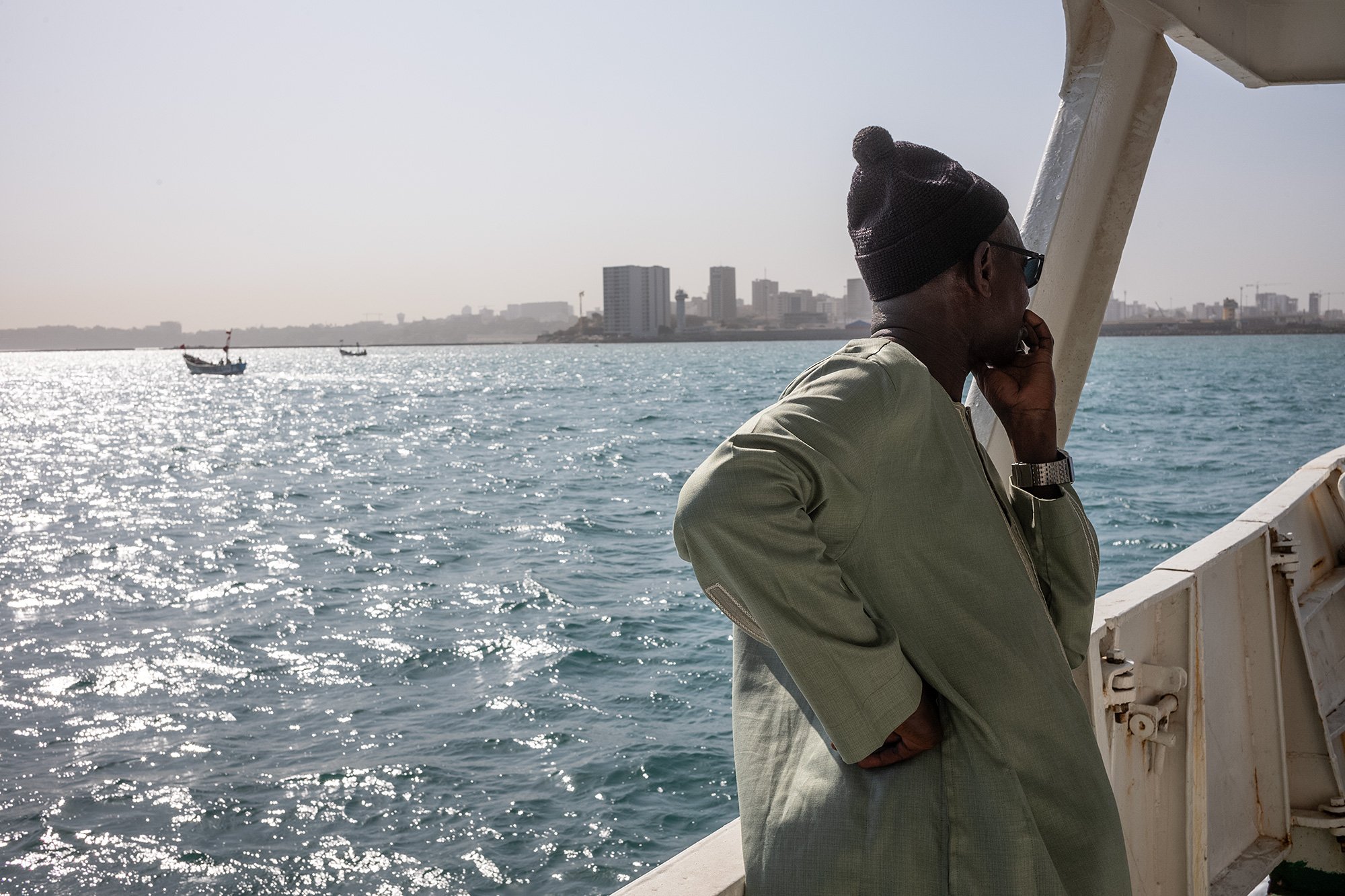


Back on the mainland we say goodbye to Diallo. He’s off to meet the group he’s taking to the island at 16:00. We’re just in time, having caught the 15:00 ferry back. I wish his daughters good luck before he disappears in the crowd.
Amadou asks if it’s ok if he switches around our itinerary. He’d like to do the city tour today and then head to the hotel. He assumes the Italians are tired (they fell asleep on the ferry back to the mainland) and I’m ok with an early end to the day having just arrived yesterday from Mexico City. Tomorrow morning he’ll take us to the African Renaissance Monument before driving north to the pink lake and Saint Louis. We all agree.
We stop by the main market. It had burned down in 1994, and was rebuilt in 1997. Before entering he asks if any of us are vegetarians. He once brought one in and they left in tears after seeing the butchered animals. We assure him we are not. He walks us around its octagonal shape, the walkways narrow and dark. I brush past and accidentally wake a shopkeeper who had been lying asleep on a bench.




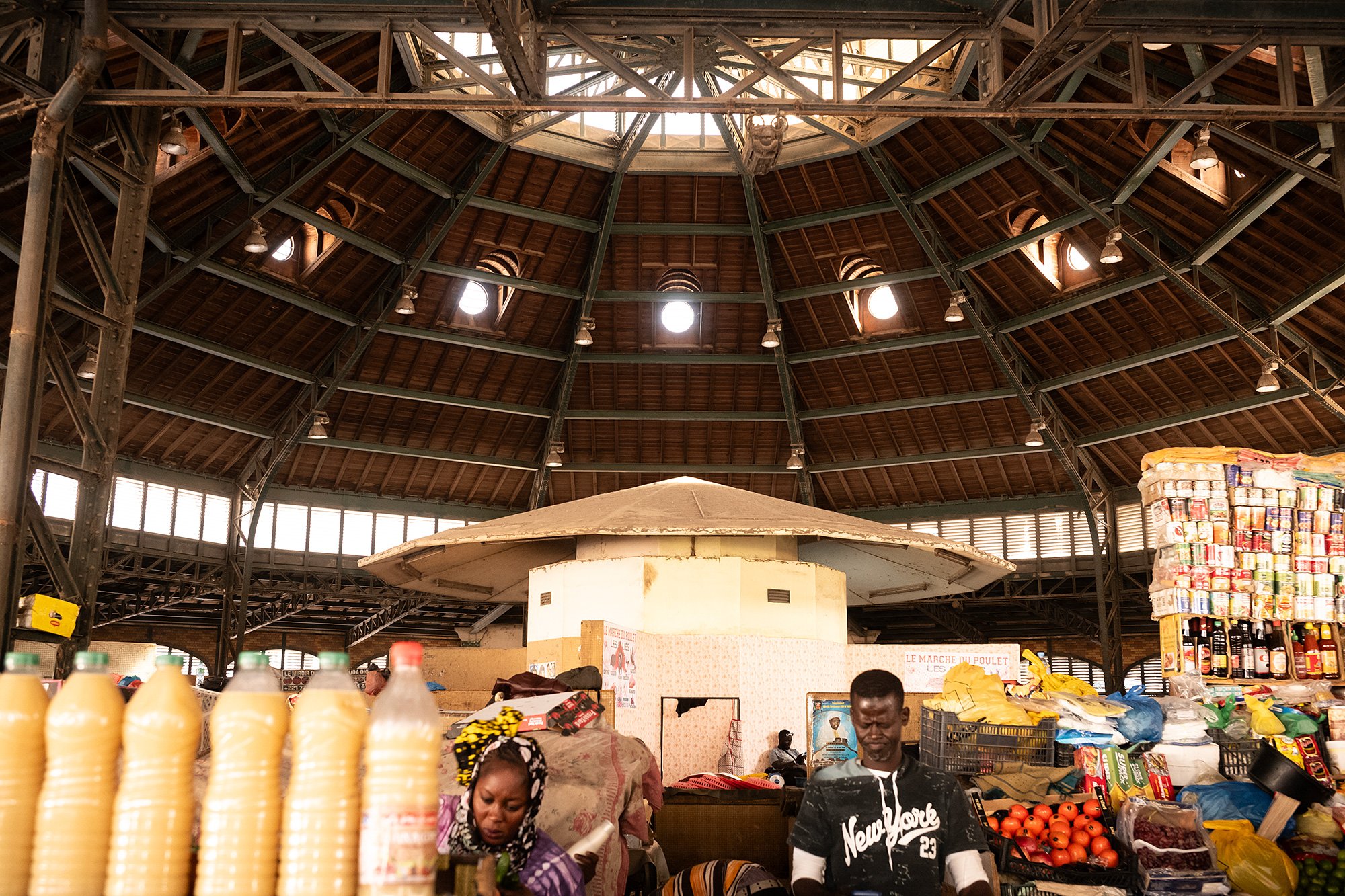

From there we drive through neighborhoods filled with embassies to Indeoendecne square. The heartbeat of the city. I ask if he’s been for new years and he said yes. With his son and daughter. His son cried when he heard the fireworks.
We stop by the Cathedral of Our Lady of Victories, but it’s closed to visitors. They are setting up for holiday festivities.
We drive along the coast and then arrive at our hotel. He tells us that he’ll pick us up at 08:00 and recommends a Lebanese restaurant nearby. We are on our own for dinner. We bid each other good night. I end up eating a poke bowl at a cafe down the street. I sit on the terrace on the second floor to watch as the street slowly calms. The sound of an adhan marks the time.
26 December 2023
🇸🇳

